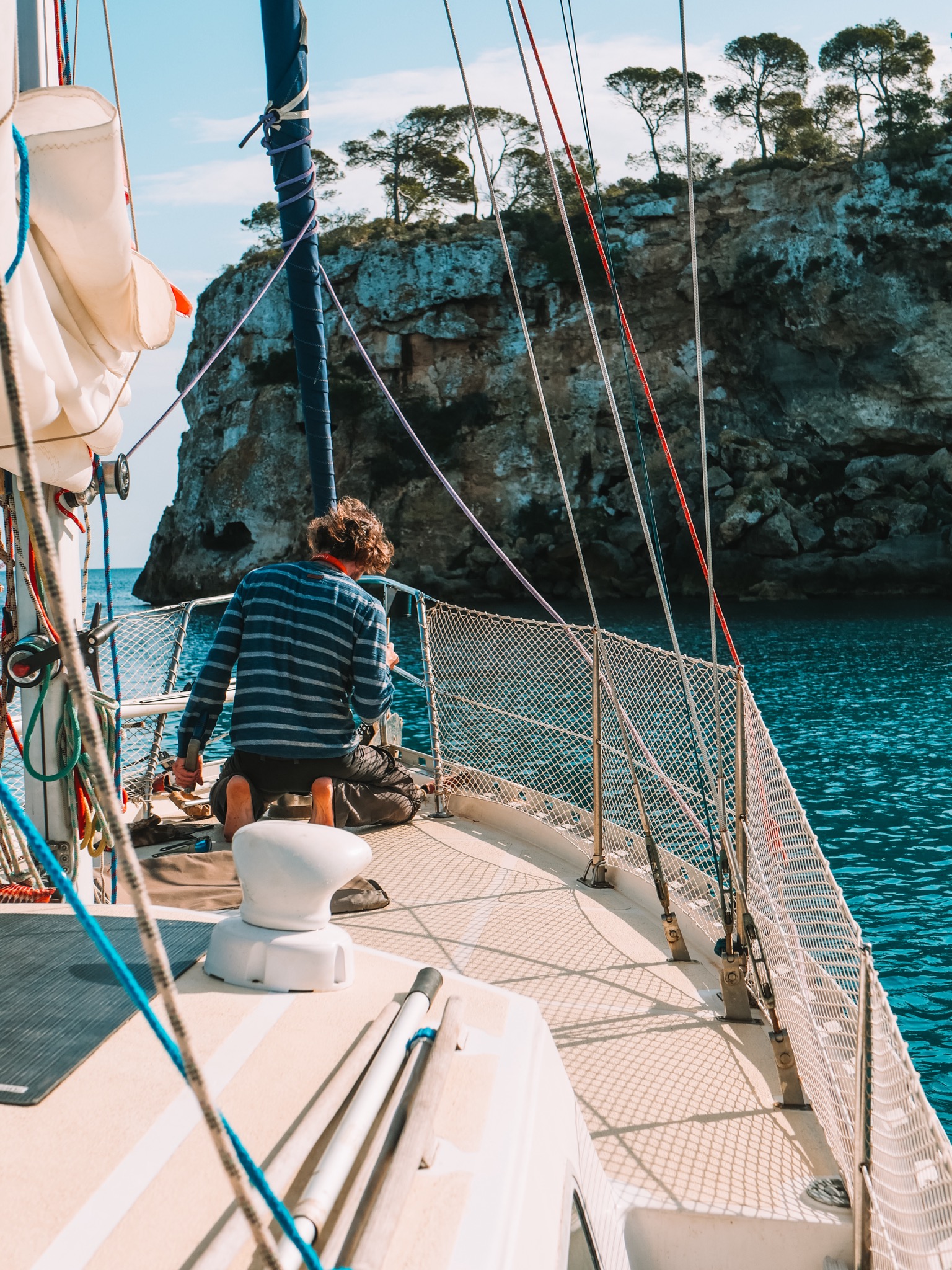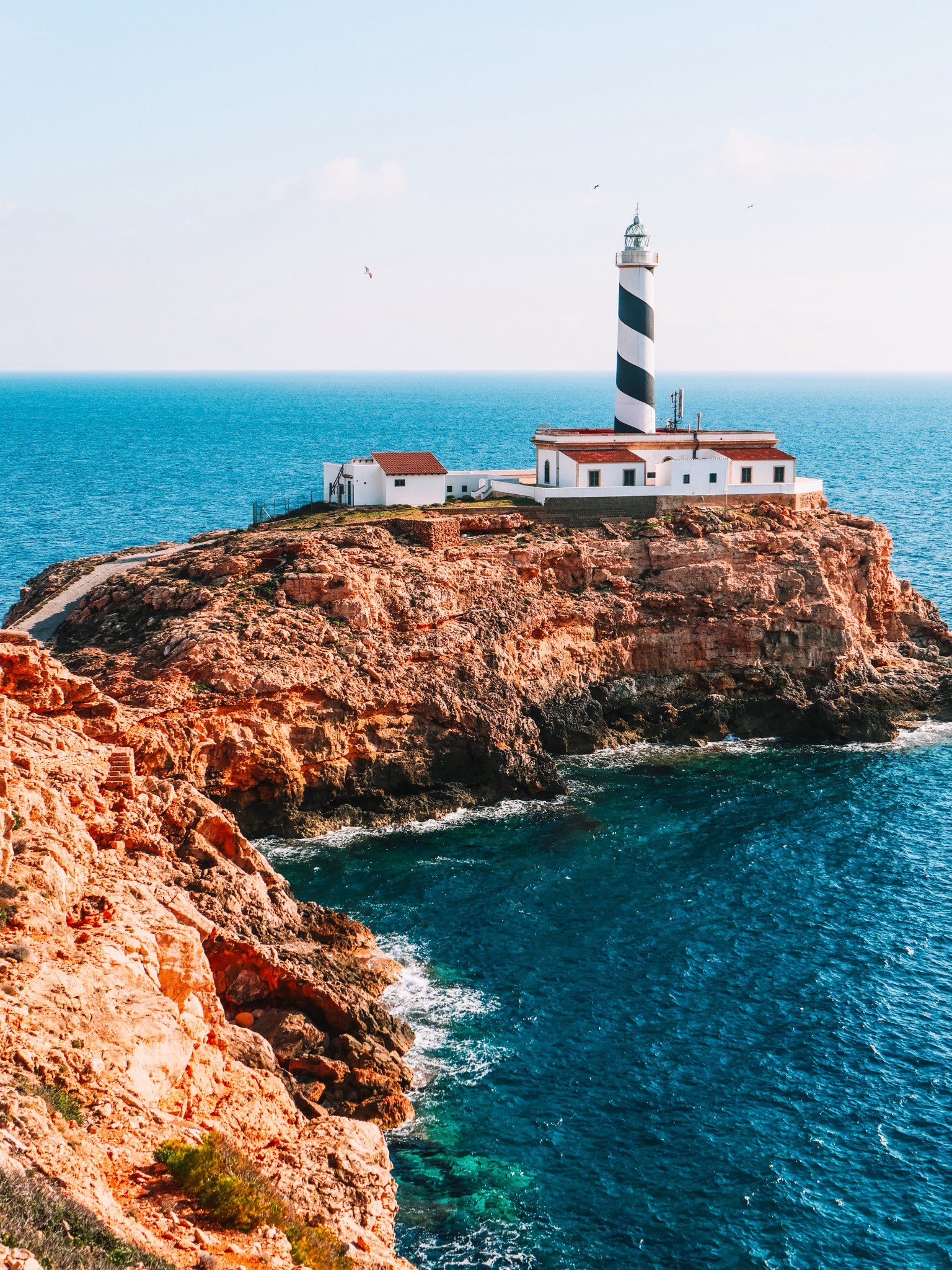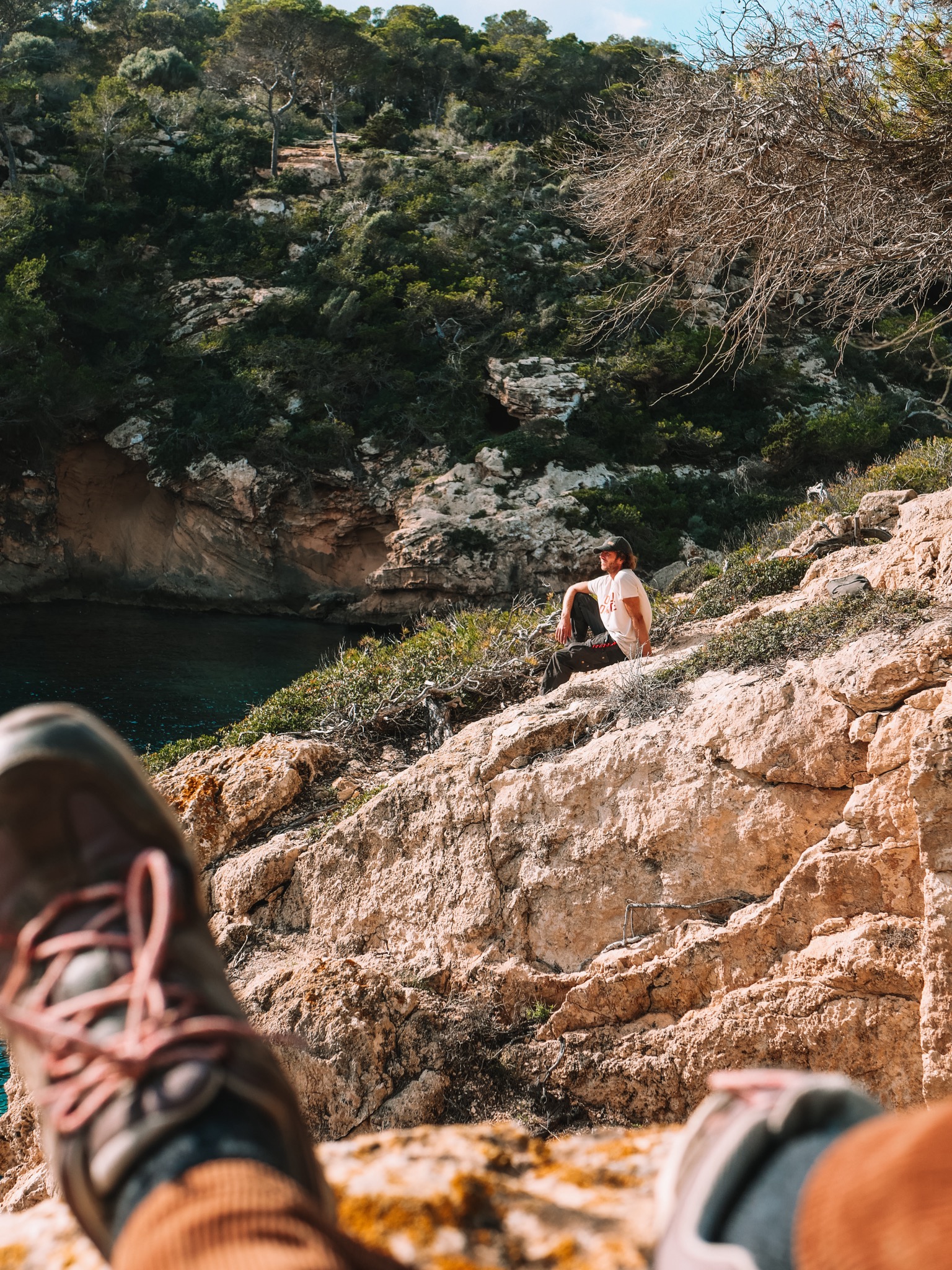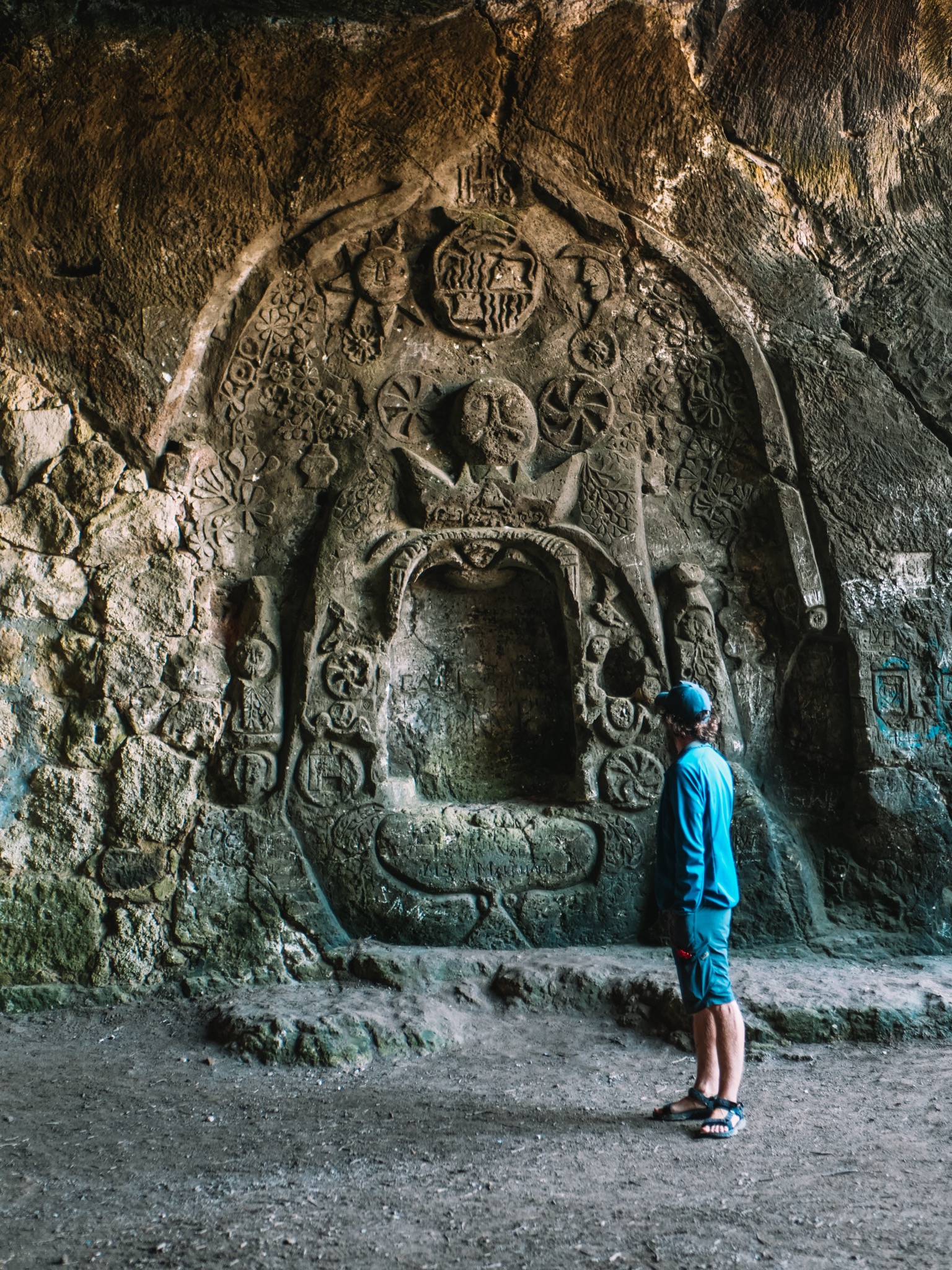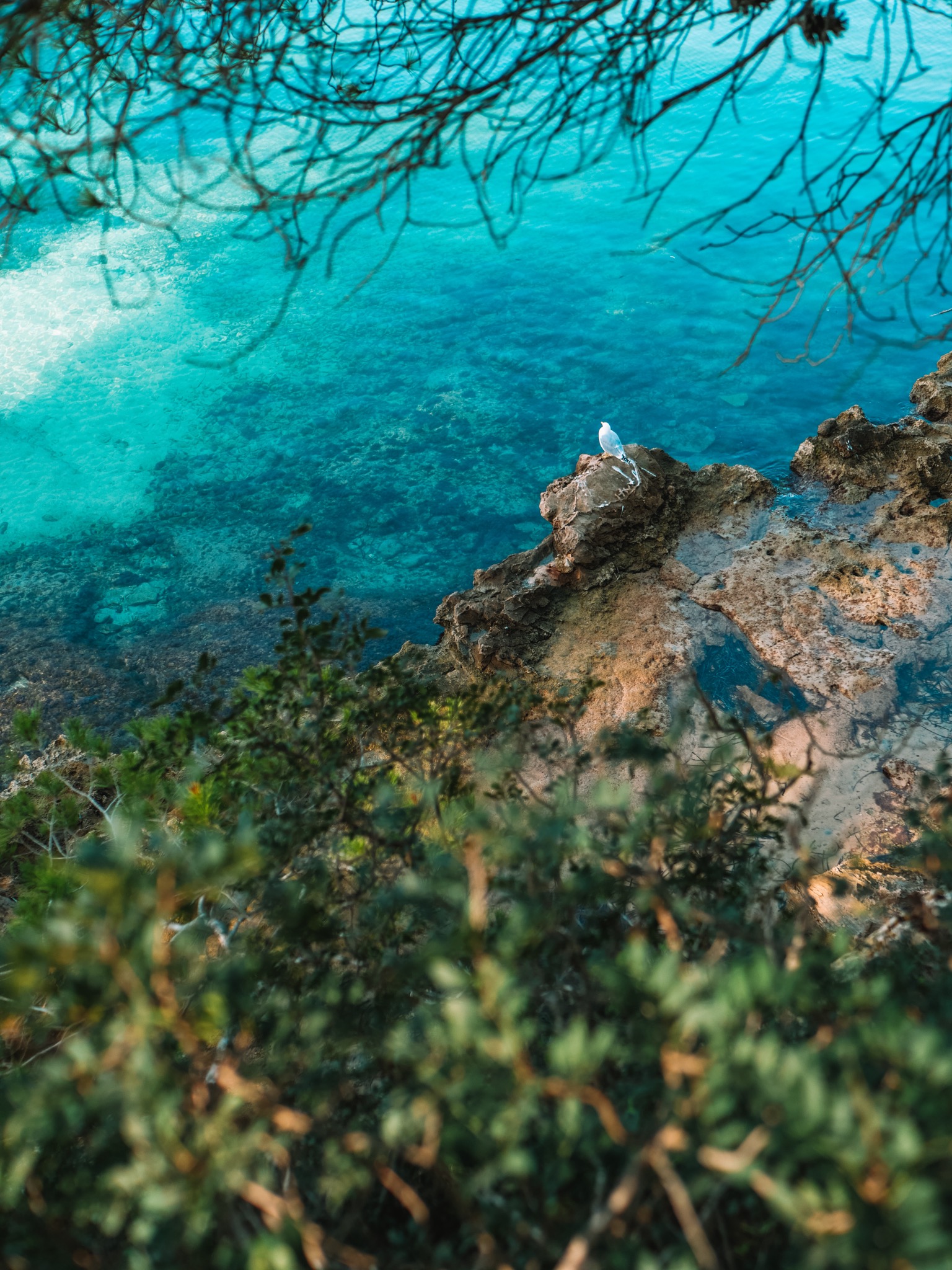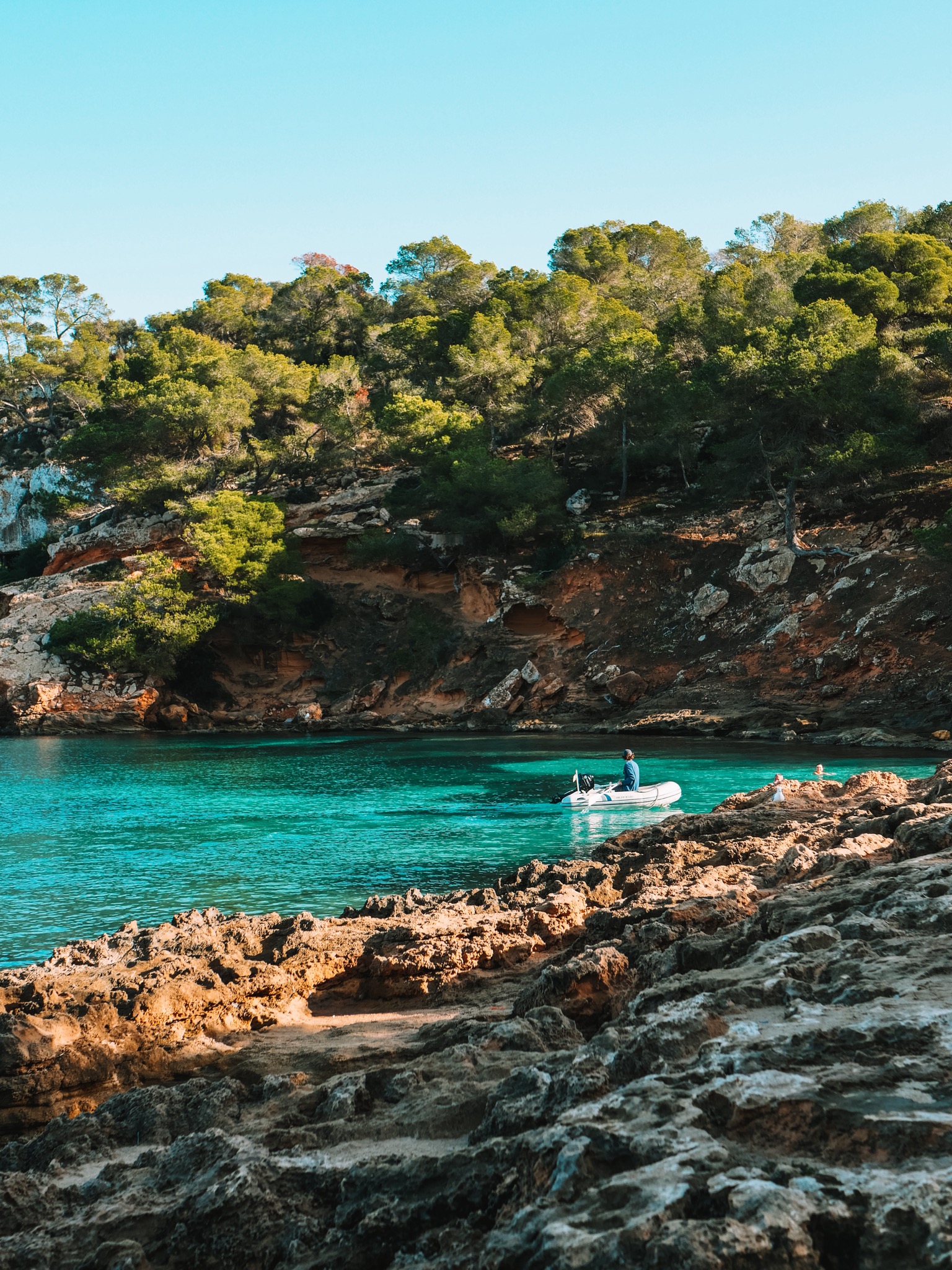A touch of history at Portals Vells, Mallorca
Elapsed time
2h 46m
Avg. speed
3kts
Distance
8.2nm
Moving time
--
Max. speed
-- kts
Spain
Nov 18, 2024 - Nov 18, 2024
It is calm as we pull the anchor up from the clear water and fine white sand. We hoist the genoa and sail at a leisurely two knots. When the wind picks up a bit, we decide to raise the mainsail as well. The sun is shining and the course is pleasant. After a while, we lower the sails and motor toward the bay. On one side, the view is less appealing, but the west side, with its cave and small beach, is stunning. The anchorage is completely empty and we drop the anchor into the white sand at a depth of about 7.5 meters. With some effort, we pull 40 meters of rusty chain out of the anchor locker, but then we’re securely anchored. Just in time, as a boat soon arrives, disturbing the calm with its waves. We think about how busy and chaotic this bay must be in the summer, but for now, it’s wonderfully peaceful. We row to shore with the dinghy. What a beautiful spot! Unfortunately, the silence is soon broken by a group of Germans who have arrived in a small motorboat and are loudly singing along to German music. Sigh… We walk to the cave and admire the beautiful inscriptions and carvings. History of the caves of Portals Vells: In the 15th century, a sailing ship was struck by a hurricane. The sails tore and the force of the waves broke the ship’s frame and mast. As the ship threatened to sink, the captain and crew made a vow to an image of the Virgin Mary, which was part of their cargo: if they safely reached the shore, they would build a chapel in her honor at the place where they landed. The storm subsided, and the wind brought the ship to the natural harbor of Portals Vells, where they sought refuge in one of the caves. There, they placed the Virgin’s image and carved an altar and inscriptions into the ground and walls. The image became a popular place of worship, especially for fishermen and sailors. At the end of the 15th century, an altar was added to the cave. This Renaissance-style altar, made by local craftsmen, has a simple and somewhat naïve appearance. It bears the coat of arms of the Rocafull family, who were the island’s governors at the time. Later, a small chapel was built in the left section of the cave to house the image. In 1863, the image was moved to the church of Portals Nous. The cave itself is artificial. According to legend, it was carved out by Moorish slaves after the Reconquista to mine limestone for the cathedral. However, archaeological excavations suggest that the caves were likely Phoenician tombs. A Phoenician ship from 600 BC was even found offshore. Incidentally, the cave smells a bit musty, probably due to too many campfires. The next day, we go on a breathtaking 8-kilometer hike. We’re continually amazed at how many walking trails are available in this area. The following day, Finn wakes us up at sunrise. We lift the anchor and trade nature for the big city.
Boat & Crew
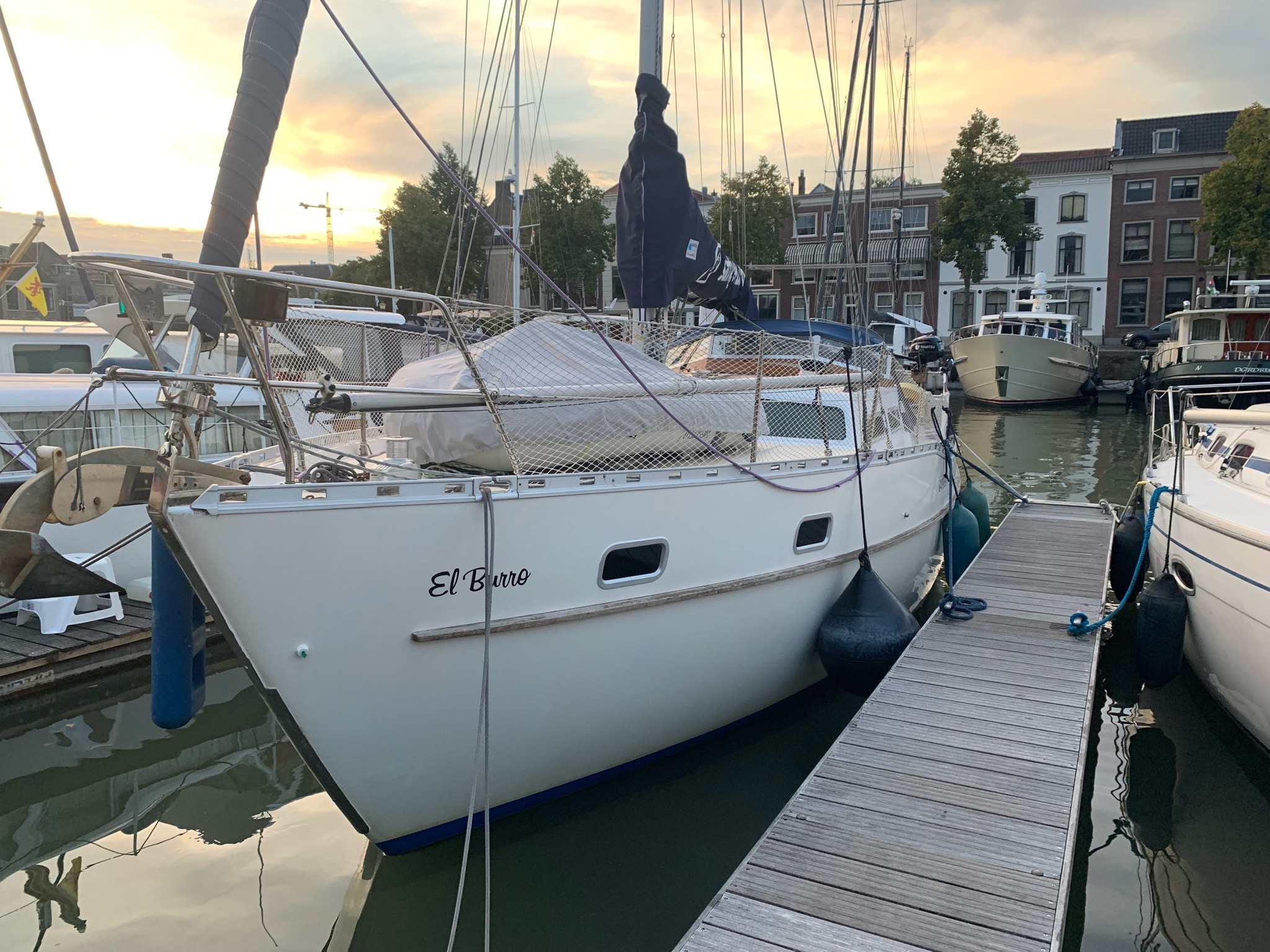
El Burro
Swallow Craft Design Group, Swift 33
